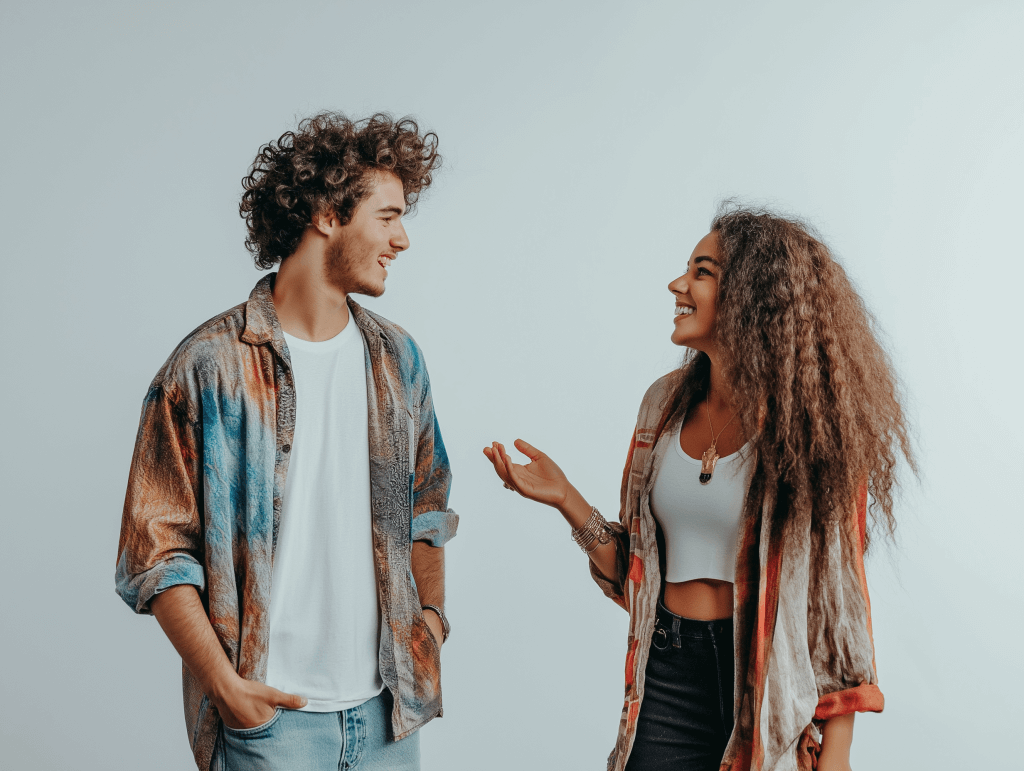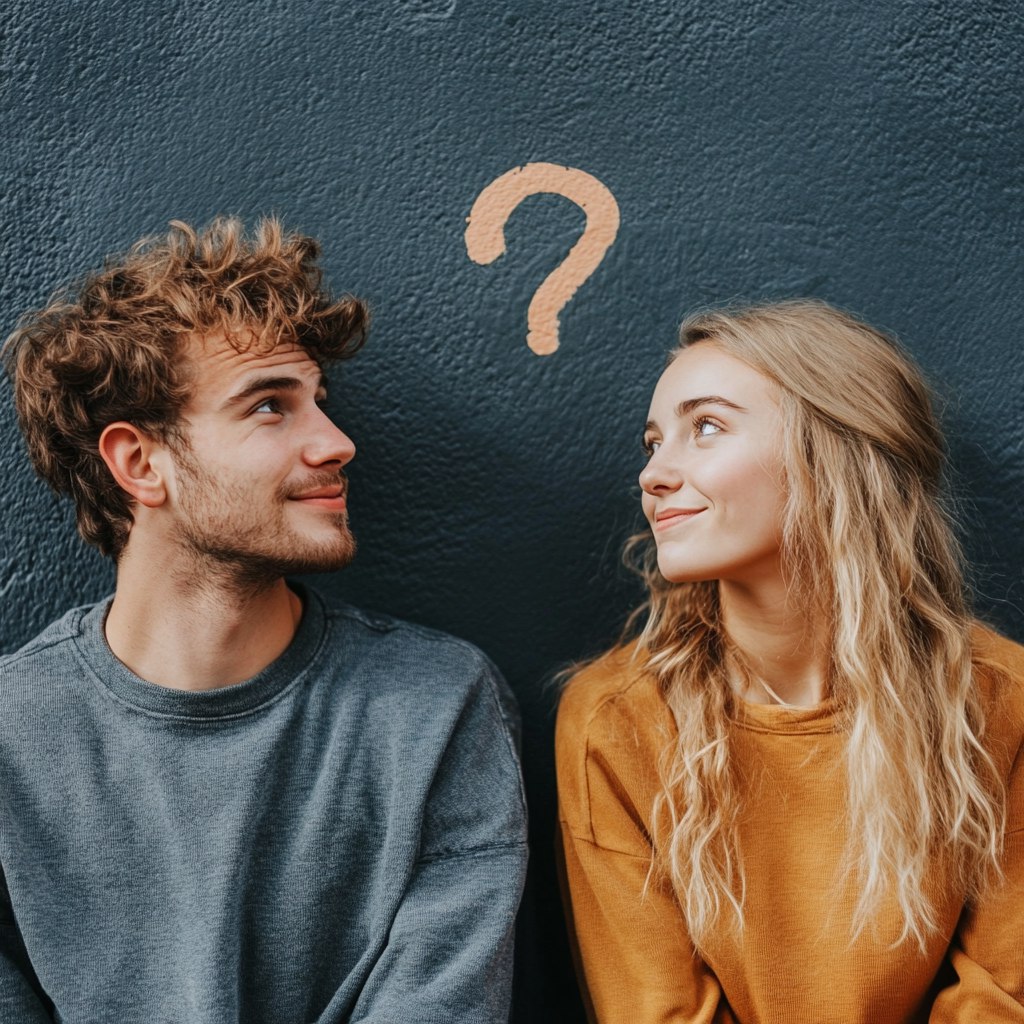Did you know that 93% of human communication is nonverbal? That is right – the words we speak only tell a tiny fraction of our story.
We have all been there – wondering if that special someone actually likes us or if we are just reading too much into their friendly behavior. The truth is, our body language speaks volumes before we even say a word. From maintaining eye contact to respecting personal space, these subtle cues show whether someone wants to get closer or keep their distance.
Understanding these hidden signals isn’t just helpful – it is essential for navigating relationships and social interactions. Whether you’re meeting someone new or trying to decode the behavior of a longtime friend, knowing how to read body language can give you valuable information about their true feelings.
In this guide, we will explore the science-backed signs that reveal when someone actually likes you, helping you move past the guesswork and understand what people are really saying without words. Let’s dive into the fascinating world of nonverbal communication!
Understanding the Science Behind Body Language
Our brains are remarkably sophisticated in processing body language and nonverbal signals. Specifically, research shows that body language processing involves multiple specialized brain regions working together to decode subtle cues.
Let’s explore how this fascinating system works.
How Your Brain Processes Nonverbal Cues
The fusiform face area (FFA) in our brain’s visual cortex specifically activates during facial expression recognition. Furthermore, the amygdala serves as our brain’s “alarm system,” rapidly evaluating emotional signals. Consequently, this complex network allows us to process body language cues in as little as 39 milliseconds.
The Role of Mirror Neurons in Attraction
Mirror neurons represent one of neuroscience’s most significant discoveries in understanding social interaction. These remarkable cells fire both during our own actions and while observing others’ movements. Studies indicate that mirror neurons develop before 12 months of age, helping us understand others’ intentions throughout our lives.
People with stronger mirror neuron activity show increased empathy levels. Additionally, these neurons help us unconsciously mirror the body language of someone we’re attracted to, creating a subtle dance of nonverbal communication.
Chemical Reactions During Attraction
During initial attraction, our brains release a powerful cocktail of chemicals:
- Dopamine: Creates feelings of pleasure and reward
- Norepinephrine: Causes alertness and excitement
- Serotonin: Influences our overall mood and happiness
- Oxytocin: Released through positive social cues and physical touch, helping form emotional bonds
These chemical reactions can trigger noticeable physical responses. For instance, adrenaline release might cause:
- Flushed cheeks
- Sweaty palms
- Racing heart
Interestingly, research reveals that the initial happy feelings of attraction involve three primary chemicals that stimulate adrenaline production, causing those familiar “butterflies” in our stomachs. Moreover, functional MRI studies show that simply learning the names of smiling individuals activates our brain’s reward centers more strongly.
Understanding these biological processes helps explain why maintaining eye contact or respecting personal space can significantly impact attraction. Our brains are constantly processing these signals, creating a complex web of communication that goes far beyond spoken words.
Physical Signs of Interest
Let’s explore the fascinating world of physical attraction signals that our bodies unconsciously display. Indeed, these subtle cues can reveal more about someone’s interest than their words ever could.
Facial Micro-Expressions to Watch For
Our faces display fleeting expressions that last mere milliseconds, particularly when we’re attracted to someone. Research shows that these micro-expressions include:
- Dilated pupils when making eye contact
- A quick raise of eyebrows upon first sight
- Slightly parted or licked lips
- Flushed cheeks or ears
- Genuine smiles that reach the eyes
Unconscious Body Movements
Subsequently, our bodies often betray our attraction through involuntary movements. Accordingly, when someone is interested, they might display what experts call “mirroring behaviors” – unconsciously matching your pace, breathing, or speech patterns. Similarly, they might lean in closer during conversations or adjust their clothing without realizing it.
Changes in Voice and Speech Patterns
Particularly fascinating is how our voices change when we’re attracted to someone. Research has uncovered that people unconsciously modify their voice patterns when speaking to someone they find attractive. Dr. Marina Kalashnikova’s research reveals that individuals experiencing positive emotions toward each other begin displaying “phonetic convergence” – their voices becoming increasingly similar throughout the conversation.
Likewise, studies indicate that women sometimes modify their voices to sound most attractive. Nevertheless, these changes happen automatically – we rarely notice we’re doing it.
Indeed, understanding these physical signs can help us better interpret others’ interest levels. However, it’s essential to remember that these signals work together – no single sign definitively proves attraction. Rather, look for clusters of these behaviors occurring simultaneously.
Proximity and Personal Space
Initially, when we think about personal space, it might seem simple, although research shows it’s far more complex than we imagine. Let’s explore how physical distance can reveal hidden feelings.
The Meaning Behind Different Distances
Anthropologist Edward Hall identified four key zones that we use in daily interactions:
| Distance Zone | Measurement | Typical Usage |
| Intimate | Under 1.5 feet | Close friends, family, romantic partners |
| Personal | 1.5 – 4 feet | Friends and acquaintances |
| Social | 4 – 12 feet | Formal interactions |
| Public | Over 12 feet | Public speaking |
In general, people who use closer distances are seen as more warm and likable. Therefore, when someone consistently maintains close personal space with us, it often signals their comfort and potential attraction.
Touch Barriers and Breaking Them
Breaking the touch barrier requires careful attention to comfort levels. We should focus on:
- Safe, non-sexual areas like shoulders and arms
- Playful, casual touches that feel natural
- Reading body language responses
- Respecting personal boundaries
Certainly, light and appropriate touches can convey warmth and connection. Still, it is essential to notice how the other person responds, as their reaction provides valuable information about their comfort level.
Direction and Positioning Signals
Body positioning tells us much about someone’s interest level. When we observe two people who are attracted to each other, they often display these behaviors:
- Leaning toward each other during conversations
- Mirroring each other’s movements unconsciously
- Maintaining closer physical proximity
- Positioning their bodies to face each other directly
Research indicates that females often talk more closely with others than males do. Additionally, temperature can affect personal space preferences – people from warmer climates typically maintain closer distances.
Understanding these spatial dynamics helps us interpret others’ comfort levels and potential interest. As we observe these signals, it is crucial to remember that cultural differences play a significant role – what is comfortable in Argentina might feel invasive in Romania.

Context Matters: Reading Situational Cues
Understanding body language requires considering the complete picture. As we explore these hidden signals, let’s examine how different situations affect our interpretation.
Professional vs Social Settings
In professional environments, body language follows stricter rules. Research shows that as much as 65% of interpersonal communication is conveyed nonverbally in workplace settings. Notably, what might be appropriate in a casual setting could be misinterpreted in a professional context.
Consider these differences:
- A friendly touch on the shoulder at a party might signal interest
- The same gesture in an office could be deemed inappropriate
- Maintaining eye contact carries different weight in meetings versus social gatherings
Group vs One-on-One Interactions
In essence, our body language shifts dramatically between group and individual settings. Primarily, we tend to display more reserved body language in groups, as our attention divides among multiple people.
As such, someone’s true interest might be easier to spot in one-on-one situations. In group settings, watch for these telling signs:
- Direction their feet point when speaking
- Who they look at first after making a joke
- How often they try to include you in group conversations
Cultural Differences in Body Language
Considering cultural variations is crucial when interpreting body language. Research indicates that while seven universal facial expressions exist across cultures, other nonverbal cues vary significantly.
| Gesture | Western Meaning | Different Cultural Interpretation |
| OK Sign | Positive | Offensive in Brazil and Turkey |
| Eye Contact | Confidence | Disrespect in some Asian cultures |
| Personal Space | 2-3 feet | Closer in Latin cultures |
In professional settings, these cultural differences become even more significant. For instance, a firm handshake that signals confidence in Western cultures might be considered aggressive in Turkey.
Understanding these contextual nuances helps us avoid misinterpretations. For example, someone from Japan might avoid direct eye contact out of respect, not disinterest. Alternatively, a person from a Latin American background might stand closer during conversations, reflecting cultural norms rather than romantic interest.
Remember that body language interpretation isn’t universal. The same gesture could mean different things depending on the setting, group dynamics, and cultural background of the person displaying it.
Common Misinterpretations to Avoid
Misinterpreting body language can lead to awkward situations and missed connections. Let’s explore how to avoid common mistakes in reading nonverbal cues.
Friendly vs Flirty Behavior
Notwithstanding our best intentions, distinguishing between friendly and flirting behavior can be challenging. Research shows that men often misinterpret women’s innocent smiles as flirtatious. Here’s how to tell the difference:
| Friendly Behavior | Flirting Behavior |
| Quick smiles with nods | Prolonged eye contact with drooping eyelids |
| Casual high-fives | Soft touches on personal areas |
| Balanced conversation | Quick responses with abundant emojis |
| Group-focused attention | One-on-one focused interaction |
Impact of Personal Bias
Undoubtedly, our personal experiences shape how we interpret others’ signals. Studies indicate that our brain pays more attention to negative messages than positive ones. Personal bias can affect our interpretation in several ways:
- Past relationships coloring current perceptions
- Cultural differences leading to misunderstandings
- Unconscious prejudices affecting judgment
- Emotional state influencing signal interpretation
Straightaway, we must acknowledge that these biases can prevent accurate reading of body language. Research reveals that even the smallest grimace or hesitation can have lasting effects on how we perceive others.
When Mixed Signals Occur
Thereafter, we often encounter situations where someone’s verbal and nonverbal cues don’t align. Dr. Marono explains that people sometimes try to control how others perceive them, especially in professional situations. Unlike clear signals, mixed messages might include:
- Nodding while disagreeing
- Smiling while showing discomfort
- Maintaining eye contact while displaying anxiety
- Mirroring behavior without genuine interest
Soon, you will notice that context plays a crucial role in interpreting these signals. For instance, what might be considered flirting in a social setting could be seen as just friendly in a professional environment.
Namely, research demonstrates that certain behaviors taken together can indicate romantic interest. Unless we consider multiple cues simultaneously, we risk misinterpreting isolated gestures. A single touch or smile doesn’t tell the whole story – it is the combination of signals that matters.
I have learned that temperature can affect how people interact, with those from warmer climates typically maintaining closer distances. Additionally, cultural biases can render some nonverbal behaviors as normal while others appear strange.
Understanding these nuances helps us avoid jumping to conclusions. By considering context, cultural differences, and personal biases, we can better interpret the hidden signs someone actually likes us versus when they’re just being friendly.

Conclusion
Understanding body language is a fascinating and invaluable skill that goes beyond words, offering insight into the emotions and intentions of others. From subtle facial expressions to shifts in voice patterns and personal space dynamics, nonverbal cues form the foundation of human communication. Besides, understanding body language transforms our ability to read hidden signals of attraction. Through this exploration, we have learned that our brains process countless nonverbal cues within milliseconds, making snap judgments about others’ interest levels before conscious thought kicks in.
Physical signs tell compelling stories – dilated pupils, subtle changes in voice, and unconscious mirroring behaviors speak volumes about someone’s true feelings. Still, personal space and positioning offer equally valuable clues, though these signals vary significantly across cultures and contexts.
Most importantly, accurate interpretation requires looking beyond isolated gestures. Rather than fixating on single behaviors, watch for clusters of signals that paint a complete picture. Remember that friendly behavior doesn’t always equal romantic interest, and cultural differences can dramatically affect how people express themselves.
Armed with this knowledge, you will spot genuine signs of attraction more easily while avoiding common misinterpretations. Just remember – body language reading is both an art and a science, requiring practice, patience, and careful observation to master.













